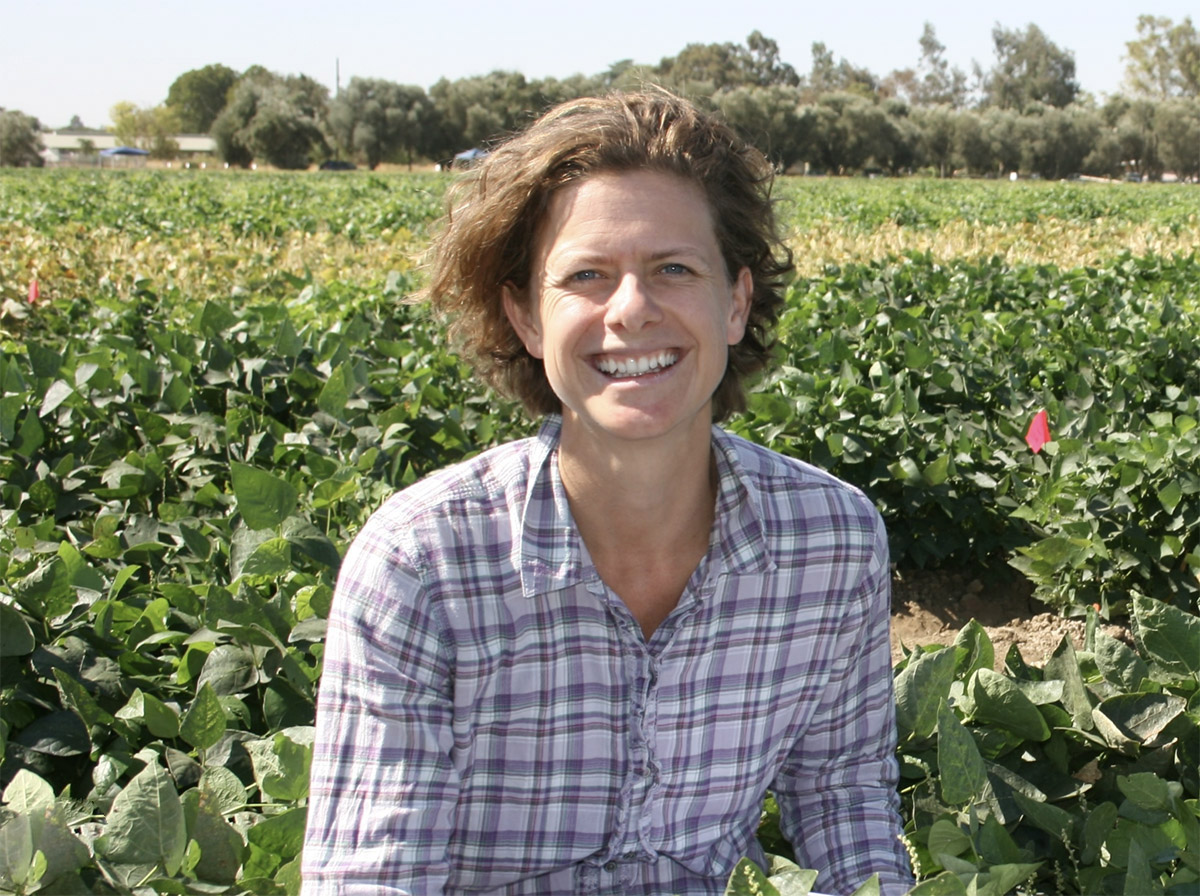March 12, 2024
Some pulses have all the tools to be great, they’re just waiting for someone to unlock their potential. Facing this task with Lima beans, researcher Sarah Dohle on her journey to make them cool.


The work being done through the National Plant Germplasm System (NPGS) is probably not well-known to many. Nonetheless, this organization’s work is incredibly important.
The NPGS is a “collaborative effort to safeguard the genetic diversity of agriculturally important plants.” Directed by the Agricultural Research Service, the dedicated scientific arm of the USDA, the NPGS brings together researchers, agronomists, and other experts to preserve and better understand crucial genetic resources for agriculture. Stored at gene banks throughout the country, NPGS maintains large stockpiles of seeds, plant shoots, and other genetic material - an incredibly valuable resource for the entire U.S. agriculture industry.
We spoke to Dr. Sarah Dohle, a leader in U.S. Lima bean research, about the encouraging work being done to improve through the NPGS to improve Lima bean genetics and bring this healthy, flavorful product to the consumer.
“We’re excited about Lima beans because they have the broadest possible adaptation for stress tolerance and a similar taste and nutritional profile to common beans,” said Dr. Dohle.
“About 90% of Lima bean varieties are photoperiod sensitive, which means they need longer nights in order to flower. So, there’s this huge amount of genetic diversity that’s basically unavailable to growers in the U.S. In these latitudes you don’t get long nights until the fall, which can leave the newly-developed seeds vulnerable to freezing when winter sets in.”
This has led researchers to a groundbreaking realization: if the photoperiod tolerance of Lima beans could be improved, it would unlock a vast store of genetic potential.
“What’s so interesting is that the wild relatives of Lima beans are more widely distributed than the wild relatives of our other beans, so we think that locked in there is genetic potential for environmental stress tolerance - flood, insects, pathogens, etc. But when it’s trapped behind this photoperiod wall, we can’t get that to the public,” said Dr. Dohle.

“It’s created a big bottleneck in terms of the usable domestic varieties in these northern and southern latitudes,” she continued. “The progenitors of Lima beans can withstand a much broader range of environmental circumstances: they're higher-wetter, dryer-wetter, warmer-colder in terms of their range. If we could start to induce those characteristics in domestic varieties, it would be a huge breakthrough.”
But unfortunately, at present the Lima bean is not widely consumed in the North American market. “Lima beans are underutilized,” said Dr. Dohle. “There are a lot of reasons for that. One is consumer awareness and access, and another is growers’ access to seeds.”
Dr. Dohle’s work is aiming to change that. Together with growers, chefs, scientists, and other collaborators, Dr. Dohle’s Lima bean project is working to broaden access to - and knowledge of - the quality and resilience of the Lima bean.
“In the summer of last year, we had some demonstration plantings in New Jersey and Pennsylvania which attracted a lot of interest. One of our growers also organized a special dinner with local chefs - a very exclusive, 5-course meal with an educational farm tour afterwards. It brought a lot of awareness to that region,” she continued.
“People were really blown away by the sheer variety of dishes that were prepared using Lima beans. They were doing all kinds of things: dehydrating them and turning them into flour, whipping them into pastes, processing them in so many unique ways. It was a great experience, and a great chance to be able to introduce Lima beans into the food culture.”
Dr. Dohle’s organization is also working with small organic farmers on the East Coast to help them incorporate Lima beans into their crop rotation. “We work with a lot of farms that do direct sales themselves, so they want to have a legume in their rotation that’s profitable and will help lock nutrients into the soil,” she said. “Lima beans serve that purpose very well, and farmers really like them, but we’ll need to keep expanding regional breeding programs for farmers to access seeds that will perform well in the region.”

Although it will take time, the effort to expand access to Lima bean seeds has already made considerable progress. But the market will also need to change its perception if Lima bean consumption is going to keep expanding. To that end, the team is working to help sellers gain a better grasp of the best ways to bring Lima beans to consumers.
“One of our collaborators is carrying out surveys to better understand the consumer’s perception and decision-making process. Some people have this outdated perception of Lima beans as chalky and not very good, but what they don’t realize is that modern Lima beans are actually buttery and delicious. But a lot of people do understand that Lima beans are healthy and good. ”
“We’re also working with urban gardening organizations and activists to position Lima beans as an effective tool for improving food security… It’s great to see that Lima beans can help improve the food security situation, especially in these urban areas where access to healthy food is so critical.”
“We’re also working with urban gardening organizations and activists to position Lima beans as an effective tool for improving food security. These are groups that do the planting, harvest, and then share nutritious meals with the community. It’s great to see that Lima beans can help improve the food security situation, especially in these urban areas where access to healthy food is so critical.”
There is undeniable potential for Lima beans to become a much more widespread crop, both commercially and in terms of production, and this is creating a palpable sense of excitement among researchers.
“I’m very excited about what the gene banks are doing,” said Dr. Dohle. “There are so many potential applications of this research at a production level, and the efforts to bring Lima beans to consumers are really taking off as well.”
In an era where food security and environmental concerns are at the forefront of the world’s priorities, the work being done at the NPGS is more important than ever. By creating more resilient genetic varieties and working to bring those varieties to the consumer, researchers like Dr. Dohle are shaping Lima beans into a powerful tool for agriculture stakeholders and people all over the globe - all of whom, let’s not forget, depend on agriculture.
Disclaimer: The opinions or views expressed in this publication are those of the authors or quoted persons. They do not purport to reflect the opinions or views of the Global Pulse Confederation or its members.